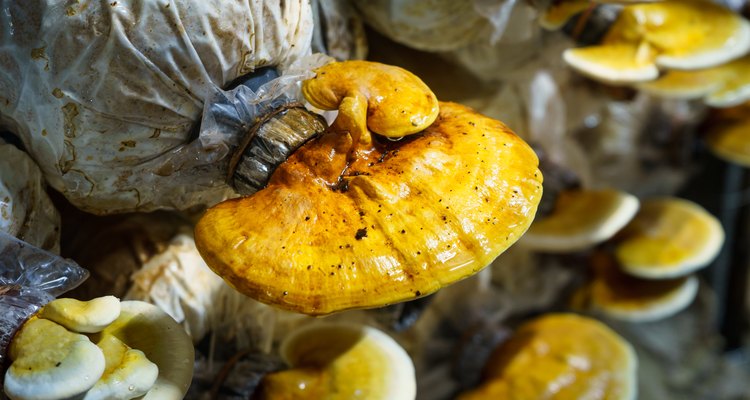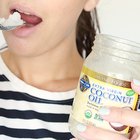
Thanmano/iStock/Getty Images
Glycoproteins are molecules containing sugar and protein, which permit healthy cell-to-cell communication in the human body. Babies receive glycoproteins from their mothers' milk that hinder bacteria, viruses and even cancer cells. For those who want to ensure they are receiving glycoproteins in their diet, you can find a number of foods packed with these organic compounds. Since foods containing glycoproteins frequently cause food allergies, make sure you're not allergic to any of these foods before introducing them into your regular diet.
Function
The benefits of glycoproteins are numerous. They act as blocking agents that prevent carcinogens both from attacking cells and from making changes to cells that have already been exposed to carcinogens. Many people make sure to include glycoproteins in their diet as a way to boost their immune systems and prevent or delay the spread of cancer.
Mushrooms
Medicinal mushrooms, such as reishi, maitake, cordyceps, shiitake and oyster mushrooms, are an excellent source of glycoproteins. These mushrooms are used to boost the immune system, help with cell communication and even fight cancer. One study showed that Japanese mushroom pickers who frequently ate these types of mushrooms developed cancer 50 percent less frequently than non-mushroom pickers.
Fruits
You can find glycoproteins in many fruits, from apples and pears to oranges and other citrus fruits. Pectins, often found in fruit, are a good source of glycoproteins. Coconuts, garlic, carrots, corn, radishes, leeks and tomatoes also provide glycoproteins. Ripe fruit, especially fruits that are allowed to ripen on the plant, will have a higher level of glycoproteins than unripe fruit.
Other Sources
Glycoproteins are also found in aloe vera, bran, oatmeal, barley, brown rice, wheat, red wine and meat. Echinacea and turmeric contain high levels of glycoproteins, as does the miracle fruit, or miracle berry. This latter fruit gains its name through its ability to turn sour foods sweet-tasting, and vice versa -- an effect of a glycoprotein that coats the tongue and alters the tastebuds for anywhere from 30 minutes to one hour after you eat it.
Related Articles

Foods to Prevent Jaundice

What Vitamins Help the Liver?

Skin Benefits of Eating Coconut Oil

How to Reduce Acne Inflammation

Skin Care Products That Contain ...

Foods That Are Natural Antibiotics

Collagen & Rosacea

What Are the Benefits of Krill Oil on ...

Foods High in Probiotics & Electrolytes

Vitamins for Mental Alertness

Chasteberry for Acne

Different Types of Fruits & Vegetables

Pros & Cons of Parabens

What Is the Nutritional Value of Wheat?

Chinese Remedies for Lines & Wrinkles

Pycnogenol and Acne

List of Retinoids

What Foods Provide Calcium D-Glucarate?

Golden Flax Seed Vs. Dark Flax Seed

Fuji Apples Health Benefits
References
Writer Bio
Jen Morel has worked in the newspaper industry since 2007. An experienced backpacker, she is a contributor to "AMC Outdoors" and other hiking/environmental magazines. She holds a Bachelor of Arts in cognitive science and philosophy.
Photo Credits
Thanmano/iStock/Getty Images